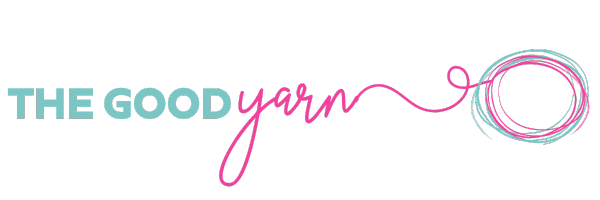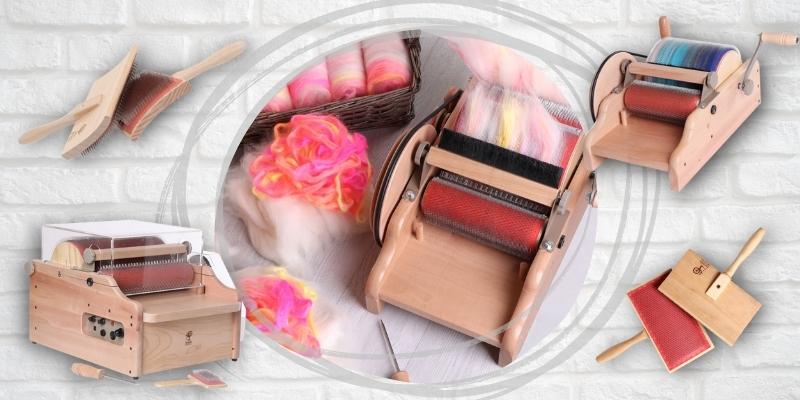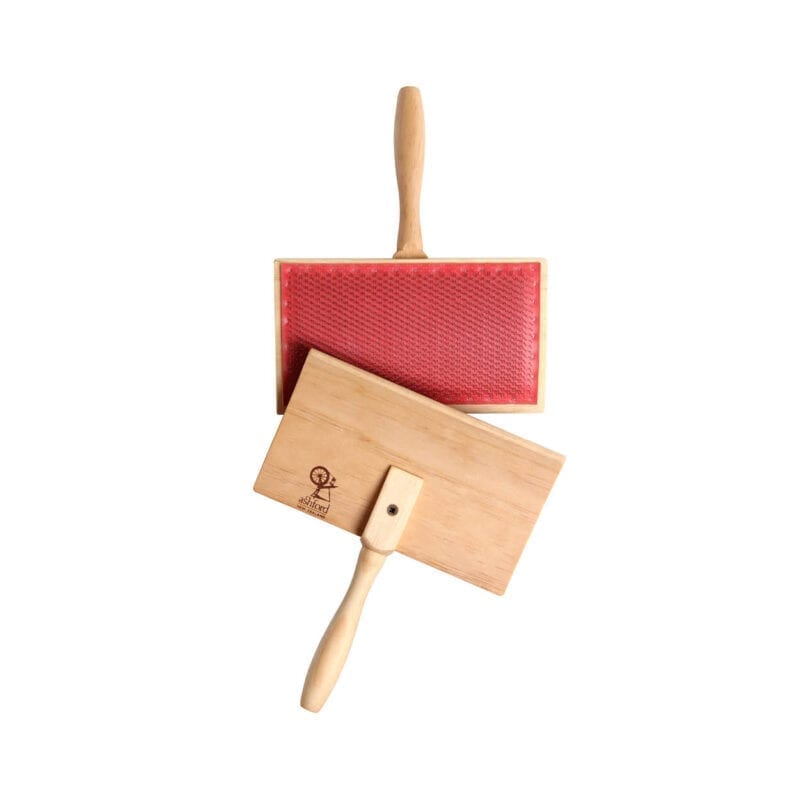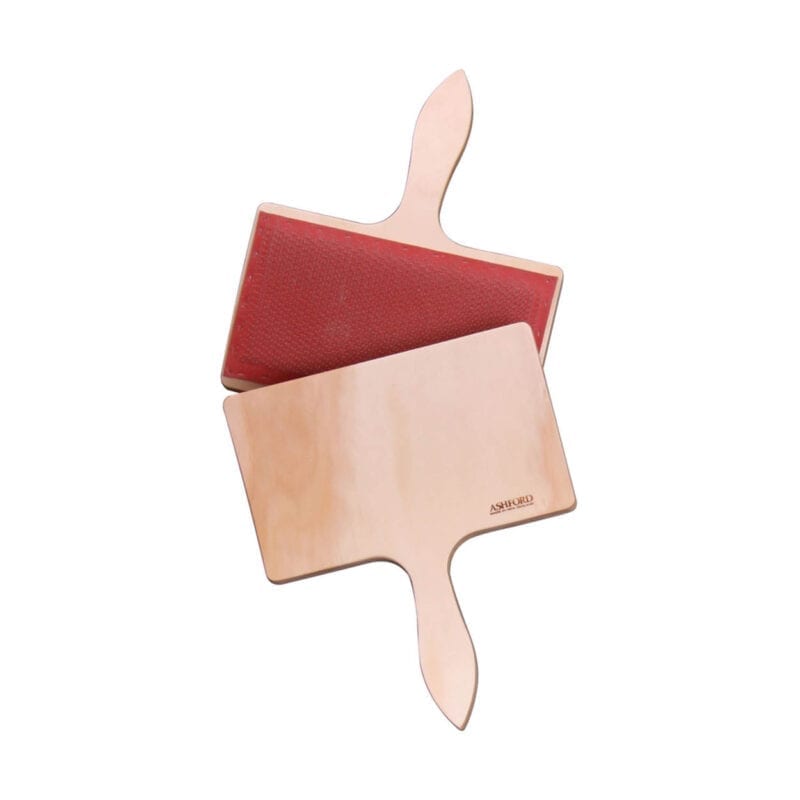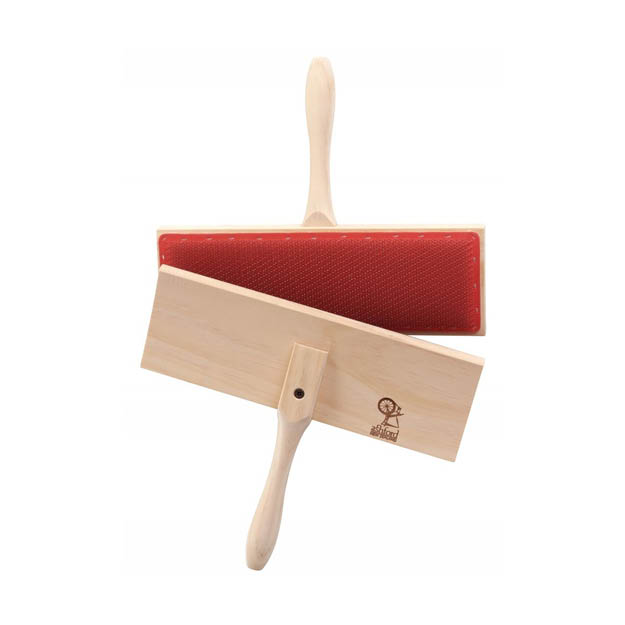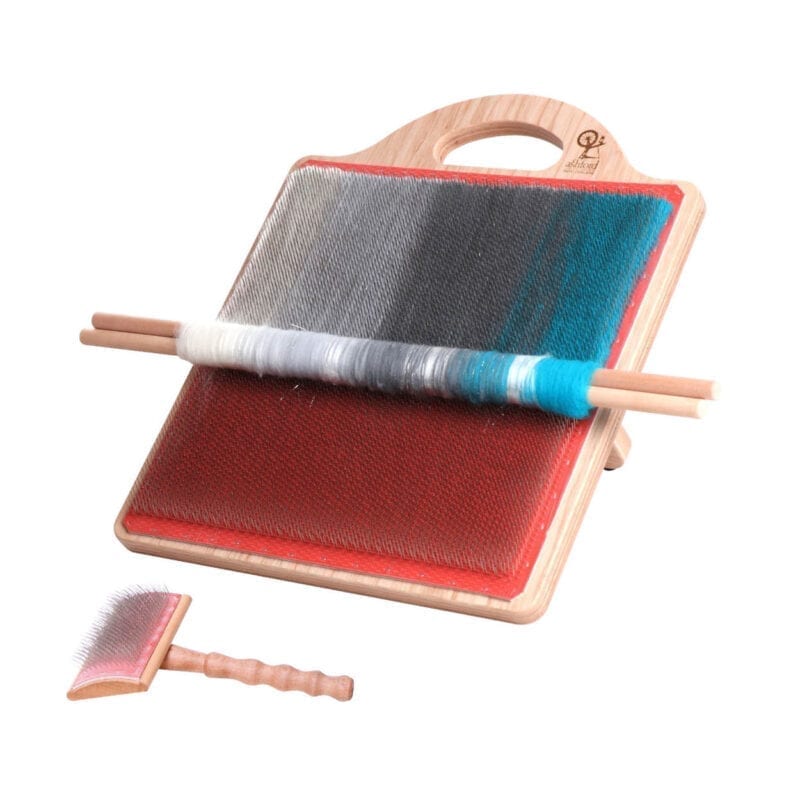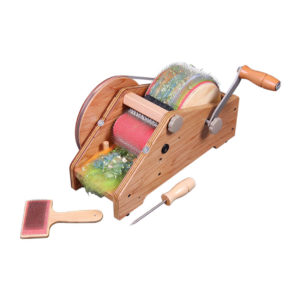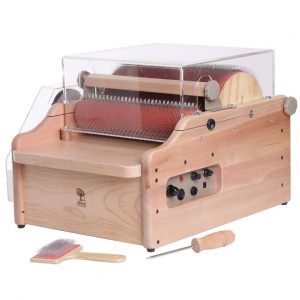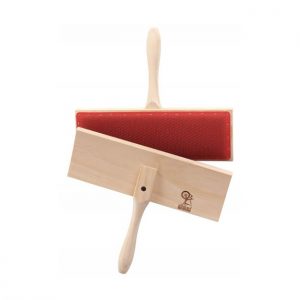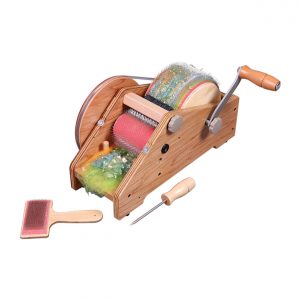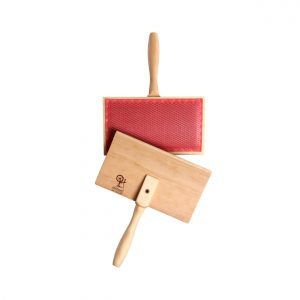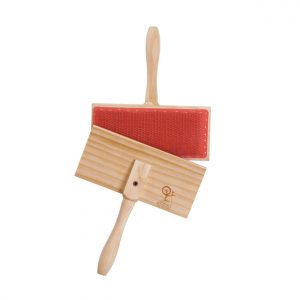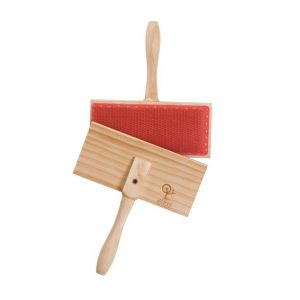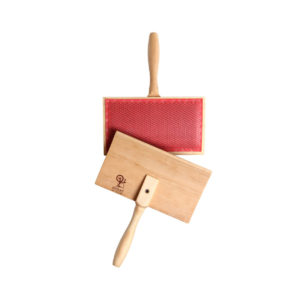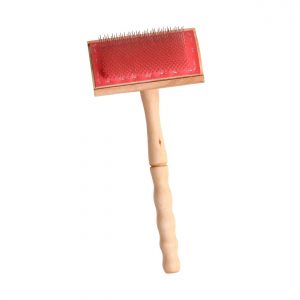What is the difference between a hand carder and a drum carder?
Types of Hand Carders and Drum Carders
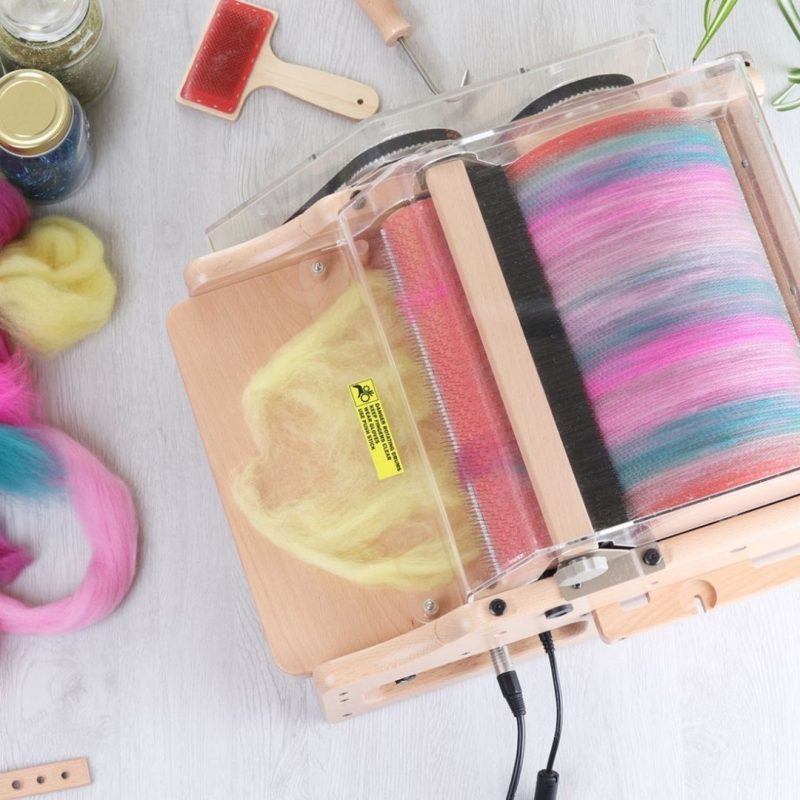
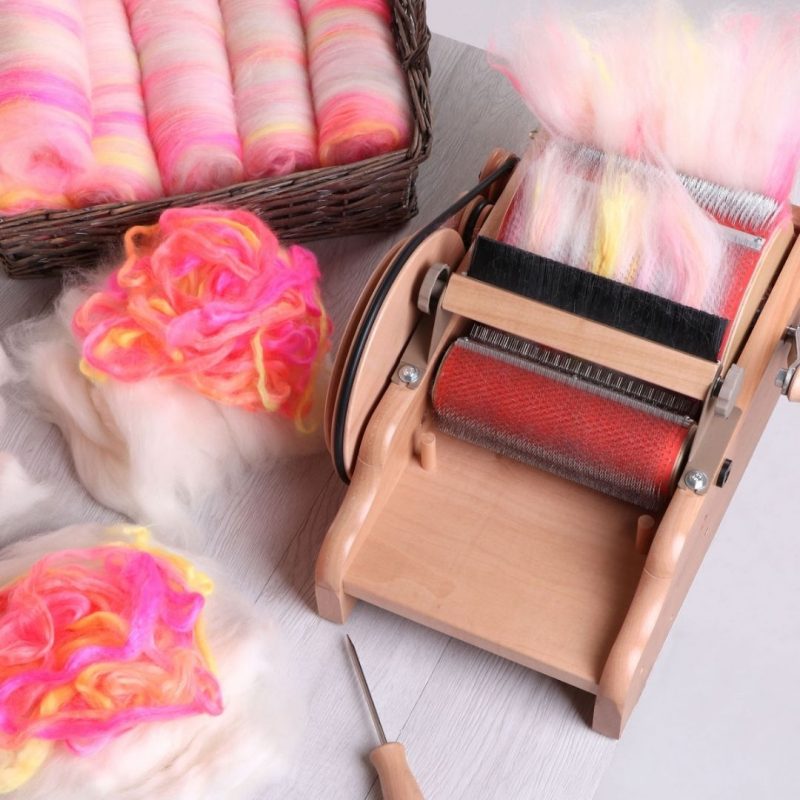
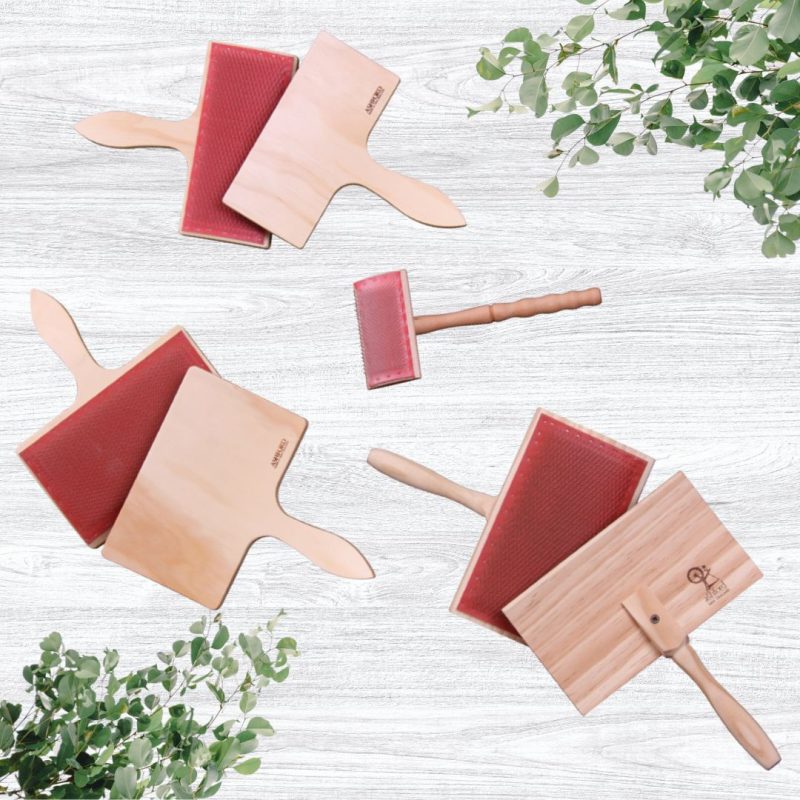
What is carding fibre?
No matter if you choose a hand carder or drum carder, the purpose of carding is the same. Carding is the name used for the process of straightening out and opening up fibre in preparation for spinning into yarn or preparing it for needle felting.
Some people prefer to do this by hand. However, you can also use hand carders, drum carders, flick carders or a blending board to make the process easier.
The one thing all of these tools have in common, is that they have rows of metal teeth that aid in aligning the fibre for spinning into yarn.
What do the Carders Point Numbers mean?
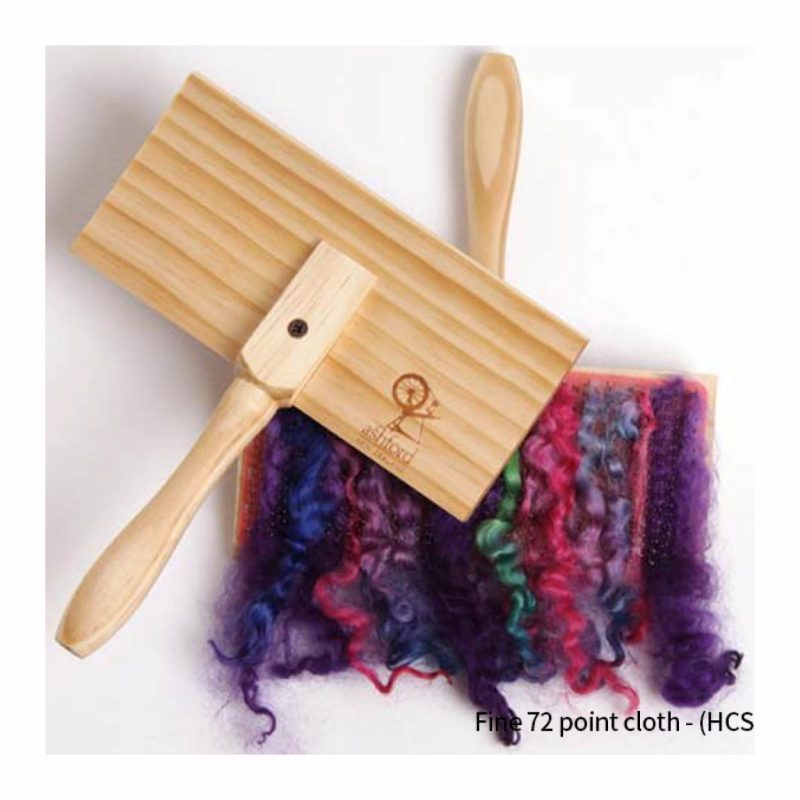
Teeth density refers to the number of teeth per square inch. Higher density carders are ideal for fine or short fibres, while lower density carders work well for longer or coarser fibres. The higher the point number of a carder, the more appropriate they are for using with finer and luxury fibres. Below I will explain the different carders we sell and their best method of use.
Types of Hand Carders & Drum Carders
What is a Flick Carder?
The Ashford Flick carder is a very popular and inexpensive tool to prepare fibres for spinning. A flick carder is largely used for preparing individual staples of wool for worsted spinning. Flick Carders are also commonly used for teasing out the fibres prior to drum carding.
The flick carder helps you to remove the short fibres and can be used with washed and unwashed fibre. Flick Carders can be used with washed or unwashed fibre. The flick carder can also be used for cleaning the drum carder.
The useful features of choosing the flick carder, is that they are portable, lightweight, come already assembled and are designed with a comfortable handle.
The card cloth has wire teeth with a special protective coating and a flexible rubber backing for long life
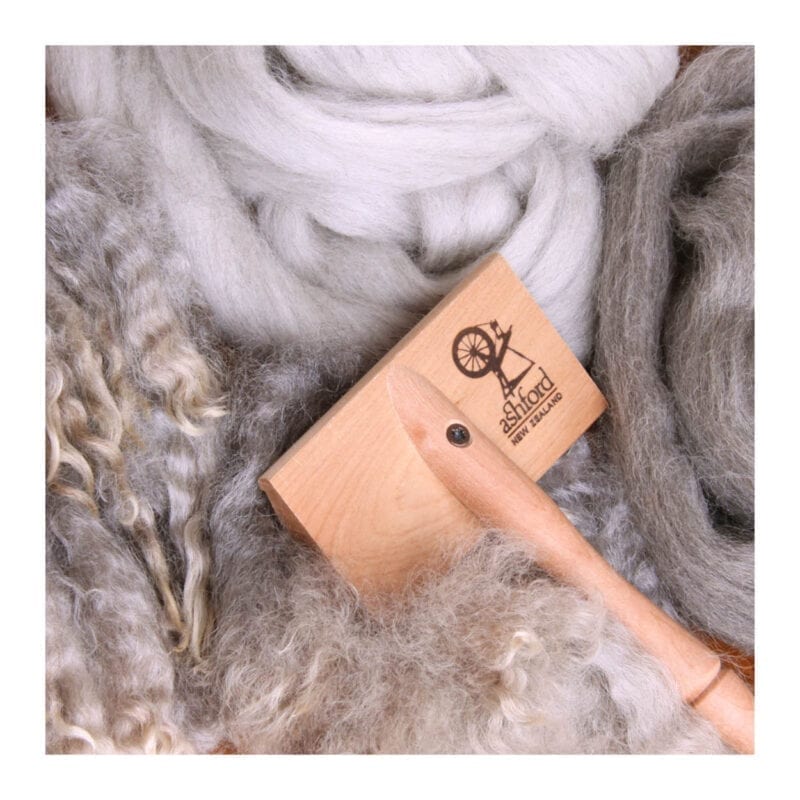
Hand Carders
Hand carders allow you to prepare several staples of fleece at once. Carders are also often used for blending multiple colours of wool. They create small rolags for spinning and both washed and greasy wool can be used. The Good Yarn offers the following hand carder sizes: Small, Fine, Cotton, Student and Classic.
Hand carders are essential tools used in the process of fibre preparation for spinning or felting. They consist of two rectangular paddles covered with wire teeth, which are used to align and blend fibres. Hand carders are commonly used for processing wool, but they can also be used for other types of fibres like alpaca, mohair, or even synthetic fibers. When choosing your hand carders, there are several factors to consider based on the type of fiber being processed and the desired outcome.
How do I use a Standard Hand Carder?
The Ashford standard hand carder is by far our most popular hand carder due to its versatility. These hand carders are great for carding and blending raw or clean fleece of 20 microns and above. They’re very good for making loose rolags. And have 72 PPSI and is a lovely, easy to use size of 220 x 125mm
How do I use a Fine Hand Carder?
The Ashford fine handcarder is very similar to the standard/classic. However, it has a finer 108 PPSI. This makes it a better choice for carding fibre of 19 microns or less
When should I use a Cotton Hand Carder?
The Ashford Cotton Hand Carder is designed purposely for cotton and those extra fine luxury fibres such as Cashmere & Angora. They are also perfect for other super fine fibres. They feature a large carding area, with the bat size being 265 x 90mm (10½ x 3½”).
The cotton hand carders have very fine wire teeth (190 PPSI) and a rubber back that is flexible which adds to its long life. It has ergonomically designed round handles to ensure a secure and comfy grip when being used.
What is a Blending Board?
Ashford Blending Boards are regularly described as having the ability to ‘paint’ a picture with fibres. They make blending and carding your fibres easy and gives you the added bonus of being able to repeat the colour order and process. The blending board is of course, also very portable. It allows you to be able to works at a table, on your lap. You can even take it away with you. Making it perfect for your spinner’s guild meetings of even a trip away.
The Blending Board also makes it easy to use up leftover and small pieces of fibre. Our Ashford Blending Board is a generous 30cm x 30cm and comes with its own blending brush and dowel rods for drafting and removing the rolags.
What is a Drum Carder?

A drum carder is the perfect choice when you are wanting to prepare large amounts of fibre. It is a tool used for fibre preparation in spinning or felting. Consisting of a large drum covered in wire teeth that rotate against a smaller drum, aligning and blending fibre. They give you the ability to quickly and easily create amazing colour blends or large batts for felting.
When selecting a drum carder, it is crucial to take into account the following aspects, depending on the fiber type being processed, as drum carders provide numerous advantages over hand carders:
The Ashford Drum Carder gives you the versatility to use or create multi-coloured slivers or even add luxurious fibres such as silk, mohair, linen and more. However, it is recommended that you use washed wool and fibres in your drum carder that are free of vegetation and dirt.
Drum Carders make it so much easier to produce rolags with graduation colour
Drum Carders also make it easy to produce rolags with graduation colour. A technique that is explained in the Ashford Book of Carding. A wonderful option on the Ashford Drum Carders is that the distance between the two drums is adjustable, giving you the ability to use a larger range of fibres. We offer the popular Standard Drum Carder, Wide Drum Carder, and the Wild Drum Carder.
Drum carders offer several benefits over hand carders, and when choosing a drum carder, it’s essential to consider the following factors based on the type of fiber being processed:
- Drum Carders are efficient and fast:
Drum carders demonstrate exceptional efficiency, enabling the faster processing of substantial amounts of fibre for your craft projects. The rotating drums and larger carding area allow for a more continuous and consistent carding process compared to hand carders. Choosing a drum carder is an excellent choice when faced with a significant quantity of fibre to process, when time efficiency is a priority or when using hand carders is physically difficult - Fibre Blending:
Drum carders are amazing at mixing different fibres or colours together. They have the superpower to effortlessly blend fibers, creating a totally smooth and harmonious blend. This is particularly beneficial if you want to create unique yarns with different fibre combinations or color variations. - Fibre Alignment:
Drum carders align the fibers parallel to each other, making them ready for spinning or felting. This alignment ensures a smoother drafting process during spinning, resulting in a more consistent yarn. It also aids in felting, as the aligned fibres create a more even surface for the felting process and gives the ability to create new colours and textures. - Fibre Control and Thickness:
Drum carders allow for greater control over the thickness of the resulting batt or roving. By adjusting the gap between the drums or changing the feed rate, you can control the amount of fibre being processed and the thickness of the final product. This is advantageous when working with specific spinning techniques or when creating batts for felting projects. - Fibre Type:
Consider the type of fibre you will be processing. Drum carders can handle a wide range of fibres, including wool, alpaca, mohair, and other animal fibers, as well as synthetic fibers. However, certain fibers may require specific drum carders. For example, if you work predominantly with fine or delicate fibers like cashmere or angora, look for a drum carder with finer teeth to prevent fiber damage. - Drum Size and Teeth Density:
Drum carders come in various sizes, and the diameter of the drums affects the carding area and the amount of fiber you can process at once. Smaller drums are suitable for smaller projects or fine fibers, while larger drums are ideal for larger quantities or longer fibers. Teeth density on the drum is also important to consider, as finer teeth work well for delicate fibers, while coarser teeth are better suited for longer or coarser fibers.
Standard Drum Carder
This popular drum carder produces a 20cm wide batt. Its is available in 72 point for finer to coarse fibres and also in a 120 point for very fine fibres. It comes with its own packer brush, cleaning brush, doffer, and clamps
Wide Drum Carder
The wide drum carder is the perfect choice for producing large batts for felting. Or, for preparing bigger quantities of fine to coarse fibres. It produces a 30cm wide batt and is available in a 72point. It also comes with its own packer brush, cleaning brush, doffer, and clamps
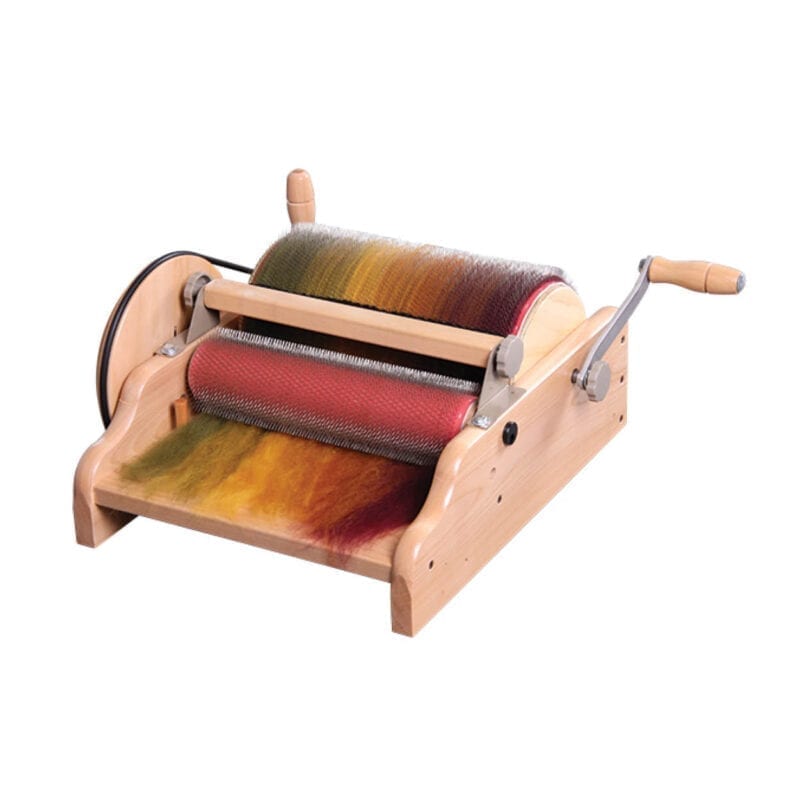
Wild Drum Carder
This fun Wild Drum Carder is purposely designed to help you create fashionable and fun batts for spinning art yarns. The Wild Carder makes a 10cm wide batt. It is a 72 point carder, meaning it lets you add additional things such as ribbons, feathers, fabrics etc to create a wonderful and exciting batt. The Wild Carder is also portable and comes with its own packer brush, cleaning brush, doffer, and clamps.
What is an E-Carder – electric carder?
This is the ultimate in carding machines. It is based on Ashford’s immensely popular 30cm wide drum. The Ashford E-carder has two powerful motors which allows your fibres to be carded effortlessly and swiftly. Then, the magnetic switch on the cover, ensures safe operation, as the motors can only run when the cover is closed. The speed of the two individual motors can also be regulated independently, therefore permitting perfect control and you card different types of fibres.
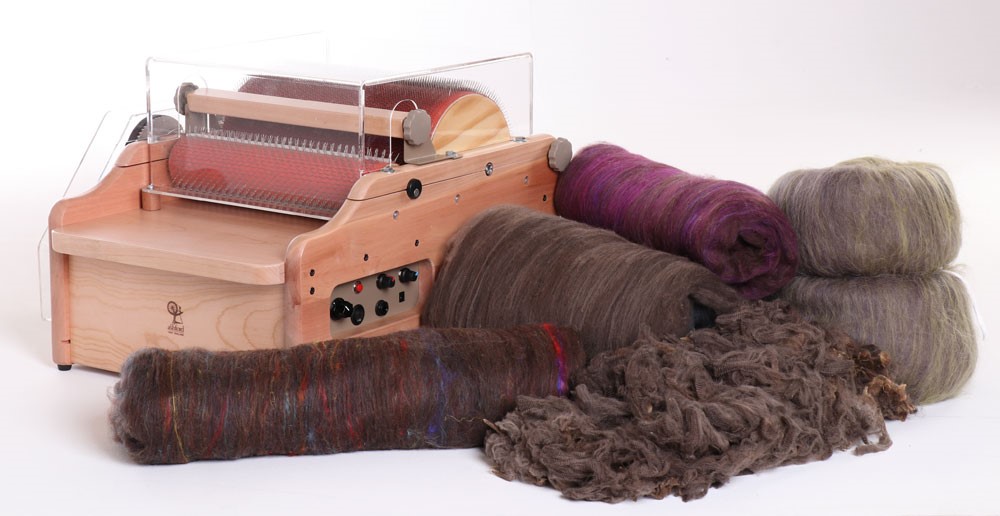
What do these terms mean?
Batt
A Batt refers to fibre that has been prepared by a drum carder and is in a rectangle shape
Carding
The opening up of fibre in preparation for spinning yarn
Carding Cloth
Carding cloth refers to the base material, usually leather or rubber, to which the metal teeth are attached. This is then attached to the hand carder or drum carder
Doffer
A long metal tool with a point. A doffer tool is used to separate fibres and allow for their removal from a drum carder
Rolag
A carded roll of fibre that is ready for spinning. You can easily make rolags with hand carders
Sliver
A continuous length of carded fibre
Worsted Yarn
Worsted yarn is popular, smooth yarn that has been spun from long staples of combed fibre
See our video tutorials explaining how to use Ashford carders
-
e-CARDER 30$2,995.00 inc GST
-
Hand Carder Cotton$99.90 inc GST
-
Wild Drum Carder – 72 PPSI – 10cm / 4″ Width$749.00 inc GST
-
Handcard Standard 72 PPSI 220 x 125mm$89.50 inc GST
-
Ashford Small Handcarders$71.50 inc GST
-
Handcard Fine Small 108 PPSI 185 x 80mm$74.50 inc GST
-
Handcard Fine 108 PPSI 220 x 125mm$91.50 inc GST
-
Flick Carder 72 PPSI – long handle$29.90 inc GST
-
Blending Board 108 PPSI$279.00 inc GST
